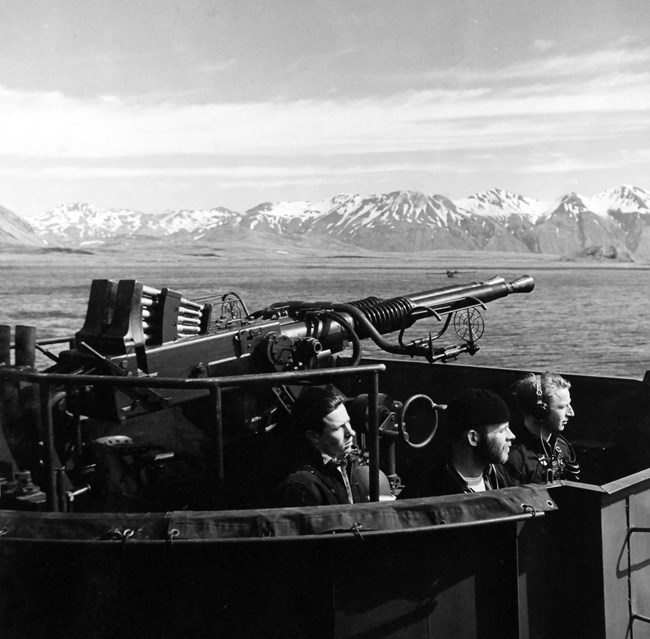Part of a series of articles titled 2023 Preservation Planning Grants Highlights.
Article
The Battle for America’s Shining Sea: Surveying the World War II Shipwrecks of Attu Island

Image courtesy of National Museum of the U.S. Navy
Recipient: Ships of Exploration and Discovery
Amount: $69,733.00
As the US Navy engaged the main Imperial fleet at the Battle of Midway in June of 1942, a smaller squadron of Japanese warships and transports steamed towards Alaska’s Aleutian Island chain. Remote, sparsely populated, and subject to harsh weather conditions, the Aleutians were also located in a strategic position. Stretching across the North Pacific, the Islands provided land that was serviceable for airfields and naval stations. Bases that the Japanese could use to launch raids on American supply convoys and even cities on the West Coast. Meeting light resistance on the Islands of Attu and Kiska in the first week of June 1942, the Japanese became the only foreign power to seize American territory since the War of 1812.
Codenamed Operation LANDCRAB, the American counterattack to retake Attu came almost a year later after training troops for one of the first amphibious assaults of the war. Using superior airpower to strike Japanese ships and airfields around the Island in the lead-up to the attack, the United States landed infantry on the north and south sides of Attu on May 11, 1943, beginning a frigid 18-day battle fought in such severe weather conditions that the US Army lost more men to the cold than to Japanese bullets.
An American victory, the Battle of Attu was the only land battle fought on North American soil during World War II and was the second deadliest battle to occur in the Pacific Theatre based on the number of troops engaged. Lessons learned during the amphibious assault on Attu’s beaches helped improve joint operations by the US Navy, Army, and Marines in the battles that took place across the south Pacific over the following two years - battles that pushed Imperial forces back towards the Japanese home islands and helped secure a total Allied victory in September 1945.
A 2023 Preservation Planning Grant from the American Battlefield Protection Program to the Ships of Exploration and Discovery, a non-profit organization, will support their efforts to conduct underwater archeology in the waters around the Island of Attu, including side-scan sonar and 3D modeling of shipwrecks and other submerged resources associated with the World War II battlefield. Using information gathered from these surveys, the non-profit will also develop a detailed map to inform future preservation efforts of the shipwrecks and other submerged resources based on the crafts’ current conditions.
Preservation Planning Grants are the American Battlefield Protection Program's broadest and most inclusive grant program, promoting the stewardship of battlefields and sites of armed conflict on American soil. In addition, ABPP administers three other grant opportunities: the Battlefield Land Acquisition Grant, Battlefield Restoration Grant, and Battlefield Interpretation Grant programs. This financial assistance generates community-driven stewardship of historic resources at the state, tribal and local levels.
Get Your Project Funded
Check out the American Battlefield Protection Program's website for more information about various grant offerings and eligibility.
Last updated: July 26, 2023
